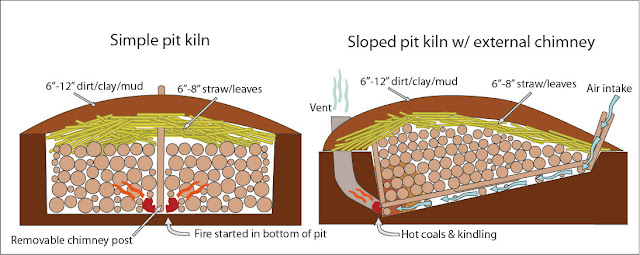Micro-Charring (Charcoal 4)
Micro-Charring for Pigment, Tinder or Medicine To read about what charcoal is, see The History of Charcoal . To read about the mound method of producing charcoal, see Charcoal Clamps , and to read about the underground method, see Pit Kilns . To read about preserving wood, see Charring Fence Posts . Apart from its use as a fuel for smelting, smithing and domestic heating, charcoal has a long history of use as pigment, tinder and medicine. Pigment Charcoal is a black substance that does not decay; it is completely light-fast (will not fade when exposed to sunlight) and chemically stable (it will not oxidize or change color over time). This makes it very useful in artwork and for writing. The oldest use of charcoal outside of a hearth was as pigment for drawing and painting on cave walls, more than 30,000 years ago. Sketching with charcoal sticks remained popular throughout human history and continues today. Painting with finely ground charcoal developed into a specialized ar...
